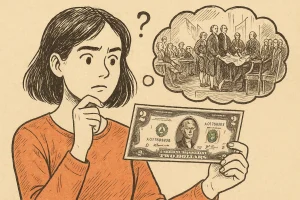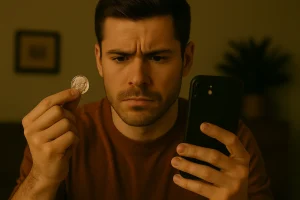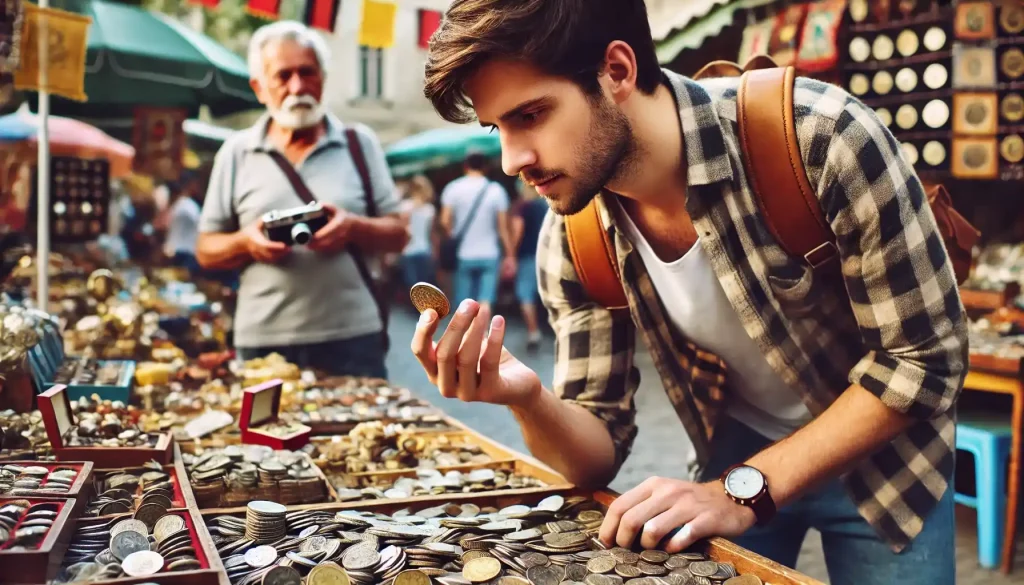Have you ever held a $2 bill and paused for a second—wondering if it’s just a quirky oddity or something far more meaningful? While most people think of it as little more than a novelty tucked into a birthday card from a grandparent, the 1976 2 dollar bill value has far deeper roots and a surprising amount of cultural and historical weight. And yes, in some cases, even a financial one.
A Bicentennial Celebration on Paper
The 1976 series $2 bill wasn’t just printed for fun. It was part of a powerful commemorative gesture to mark the United States Bicentennial—200 years since the signing of the Declaration of Independence.
Unlike standard-issue currency that typically fades into background noise, this note boldly proclaims its historical relevance. On the front, Thomas Jefferson stands resolute—a founding father whose legacy is literally etched into the bill’s design. But it’s the back that steals the show.
Instead of abstract symbols or generic illustrations, the reverse of the 1976 $2 bill features a detailed engraving of John Trumbull’s Declaration of Independence, showcasing the committee presenting the draft to Congress.
The art was adapted from Trumbull’s famous painting that hangs in the U.S. Capitol Rotunda. In one piece of currency, you hold a direct link to one of the most pivotal moments in American history.
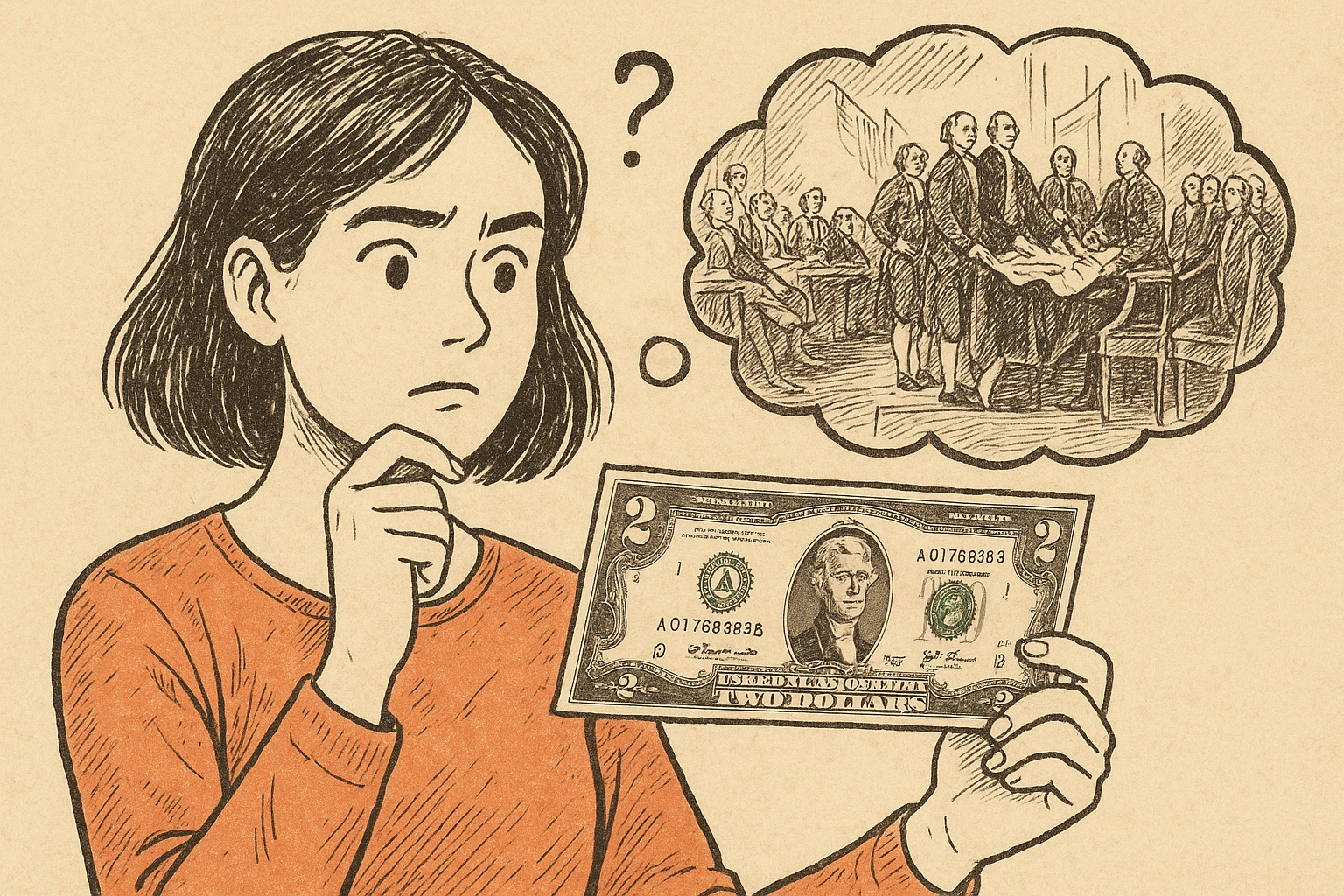
The Origins Go Even Deeper
Though 1976 marked a major reissue, the $2 denomination itself dates back to 1775. These early notes played a vital role in financing the Revolutionary War—meaning this small bill has always been entangled with American independence.
The original issues were Continental Currency notes issued by the fledgling government. Over time, the denomination became less common in circulation and eventually adopted a kind of mythic status among the general public.
So, by the time the 1976 series hit wallets, the $2 bill already had layers of lore behind it. This made the reissue all the more exciting for historians, numismatists, and casual collectors alike.
Misconceptions and Myths: Is It Really That Rare?
The mystique surrounding the $2 bill largely comes from one simple fact: people rarely use it. Because it’s uncommon in everyday transactions, many assume it was discontinued or never widely printed. But the numbers tell a different story.
In 1976 alone, the U.S. Bureau of Engraving and Printing released approximately $590 million worth of $2 bills across all Federal Reserve Districts. That’s tens of millions of notes! So why don’t you see them?
The answer is perception. Many recipients of these bills—especially during the Bicentennial celebrations—assumed they were too “special” to spend. So they were tucked away in drawers, collections, and safe deposit boxes.
This created a circulation vacuum and added to the belief that $2 bills are ultra-rare, even though plenty still exist in bank storage or private hands.
But rarity in the world of collectibles doesn’t always come down to sheer quantity. It’s about nuance—details like serial numbers, printing anomalies, and condition. Which brings us to the question every curious bill-holder wants to know: is mine valuable?
Key Factors That Determine the Value
Let’s break down the most critical attributes that elevate the worth of a 1976 $2 bill beyond the number printed on it:
| Feature | Why It Matters |
| Condition | Uncirculated notes (crisp, clean, no folds) fetch higher prices. |
| Serial Numbers | Star notes, repeating digits, ladders, or palindromes are especially collectible. |
| Printing Errors | Misalignments, ink smudges, and cutting mistakes increase rarity and value. |
| Federal Reserve District | Some districts issued fewer notes, making those bills harder to find. |
Let’s look deeper into these specifics.
Condition: The Cornerstone of Collectability
Collectors prize uncirculated notes—bills that have never been folded, handled, or damaged. These are often kept in protective sleeves and show no signs of wear. A 1976 $2 bill in mint state can be worth anywhere from $8 to $30, depending on market demand.
On the flip side, heavily circulated notes with creases, ink smears, or frayed edges typically hold only face value—unless they offer something unique in terms of serial number or print anomaly.
Star Notes: Small Symbol, Big Difference
One of the most valuable features you can spot on a 1976 $2 bill is a star next to the serial number. These star notes were printed to replace faulty bills and are inherently rarer than standard issues. A well-preserved 1976 star note from a scarce district can command $200 to $2,000+ at auction.
Pro Tip: Look for a small star symbol where a letter would normally appear at the beginning or end of the serial number.
Unique Serial Numbers: Patterned Treasure
Collectors love interesting number sequences. Here are a few examples that add premium value:
- Repeaters: 35353535
- Ladders: 12345678 or 87654321
- Solids: 88888888
- Low Numbers: 00000001 to 00000100
- Palindromes: 12344321
The more distinct or symmetrical the pattern, the more desirable the bill.
Printing Errors: Mistakes Worth Money
Sometimes errors slip through the minting process—these are gold for collectors. For example:
- Off-center printing
- Double serial numbers
- Inverted back print
- Blank areas from ink skips
Even a minor anomaly can dramatically increase a bill’s value, particularly when authenticated by professional grading services.
District Rarity and Limited Print Runs
Each 1976 $2 bill was printed with a letter corresponding to one of 12 Federal Reserve Banks (A through L). Bills from districts like Minneapolis (I) or San Francisco (L) had smaller print runs, making them more desirable in the collector market.
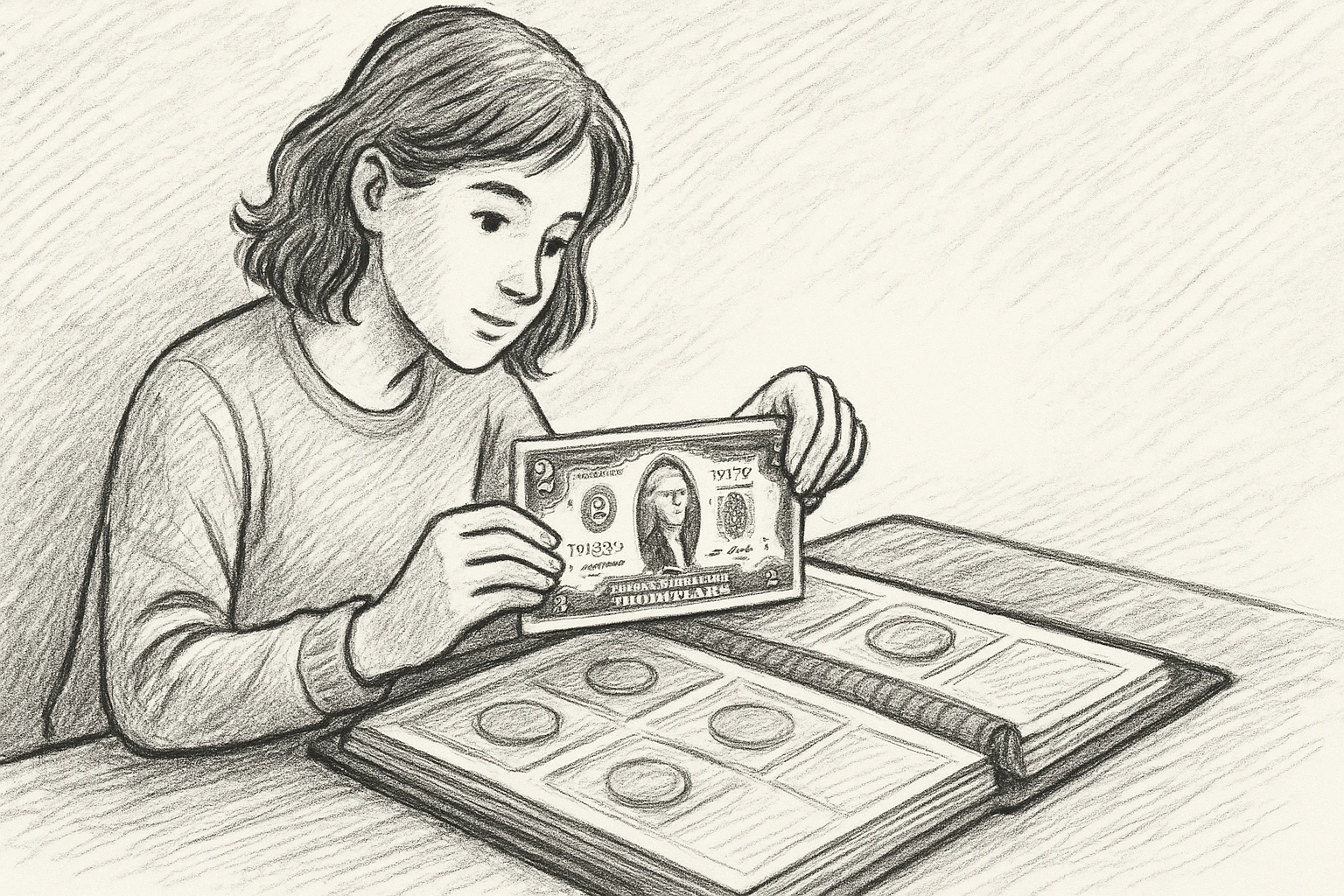
So you’ve found a 1976 $2 bill in a drawer, tucked inside a birthday card, or perhaps handed over as change during a road trip. Could it be one of the rare ones? The answer lies in a simple, methodical approach. Below is a quick checklist to help you determine whether your note deserves a place in your wallet—or in a collector’s case.
Step-by-Step: Evaluating Your 1976 $2 Bill
1. Examine the Condition Closely
- Is it crisp and unfolded?
- Are the edges sharp and the colors vibrant?
- Any stains, tears, or creases?
A bill in pristine condition could be worth multiple times its face value—even without rare serials.
2. Look at the Serial Number
- Does it contain a star (*)?
- Do the digits repeat, mirror, or form an unusual sequence?
Example: A note with the serial “00000001” or “88888888” is highly collectible.
3. Identify the Federal Reserve District
- Each note has a district letter (A–L) tied to a Federal Reserve Bank.
- Notes from less common districts (e.g., “I” for Minneapolis) can be more valuable.
4. Check for Errors or Misprints
- Hold it under good lighting and examine alignment, spacing, and coloration.
- A shifted seal or duplicated serial number might indicate a printing anomaly.
5. Use Technology for Instant Help
Here’s where modern tools shine. Open the app and follow these steps:
- Take a photo of both sides of your $2 bill.
- Let the app analyze serials, condition, and note type.
- Review the estimate and historical auction results for similar finds.
It’s like having a numismatics expert in your pocket—ideal for collectors and curious hobbyists alike.
When to Consult a Professional
If your bill appears to be especially rare—such as a star note in mint condition or one with a verified misprint—it may be worth having it professionally graded by agencies like PMG (Paper Money Guaranty) or PCGS Banknote.
These services provide an official condition rating and can authenticate your find, which significantly boosts its resale value at auctions or collector shows.
Graded notes often sell for a premium, especially if they’re sealed in tamper-evident holders with certification labels.
Should You Keep or Sell It?
That’s entirely up to you. Some collectors hold onto unique bills for long-term appreciation, while others sell during market highs. Here’s a quick breakdown of both options:
| Option | Why Choose It |
| Keep It | Great for personal collections, historical value, or as a gift investment |
| Sell It | Takes advantage of current demand and market pricing |
Coin and currency expos, online auctions, and collector forums are great places to explore if you choose to sell.
The 1976 $2 bill isn’t just currency—it’s a compact historical artifact. For some, it’s a conversation piece. For others, it’s a serious collectible with surprising value. And for the informed collector, armed with knowledge and tools, it’s a gateway to a fascinating hobby that blends history, art, and financial reward.
So next time someone hands you a $2 bill, don’t dismiss it—inspect it. You might just be holding a small slice of American heritage… worth far more than two dollars.


